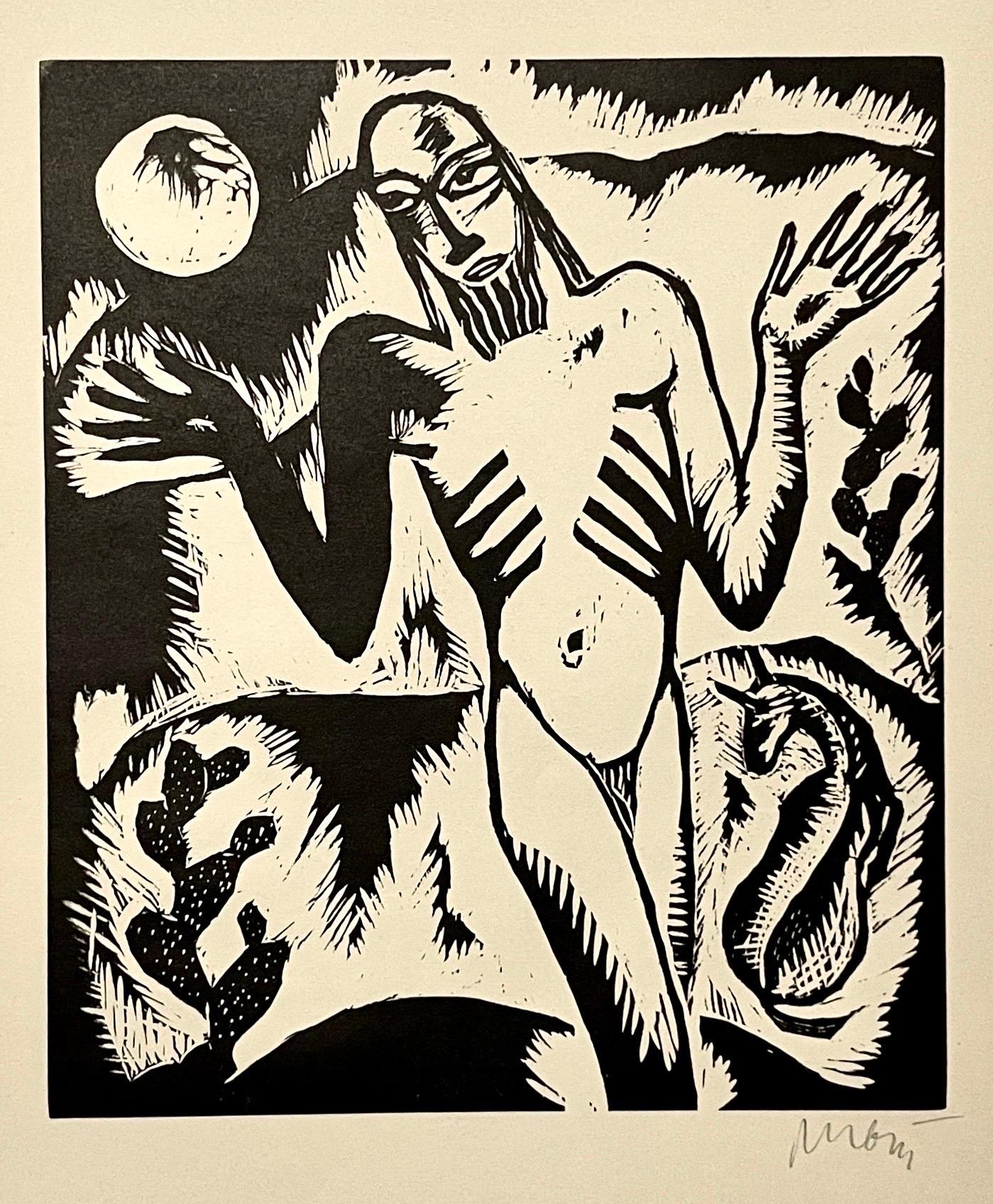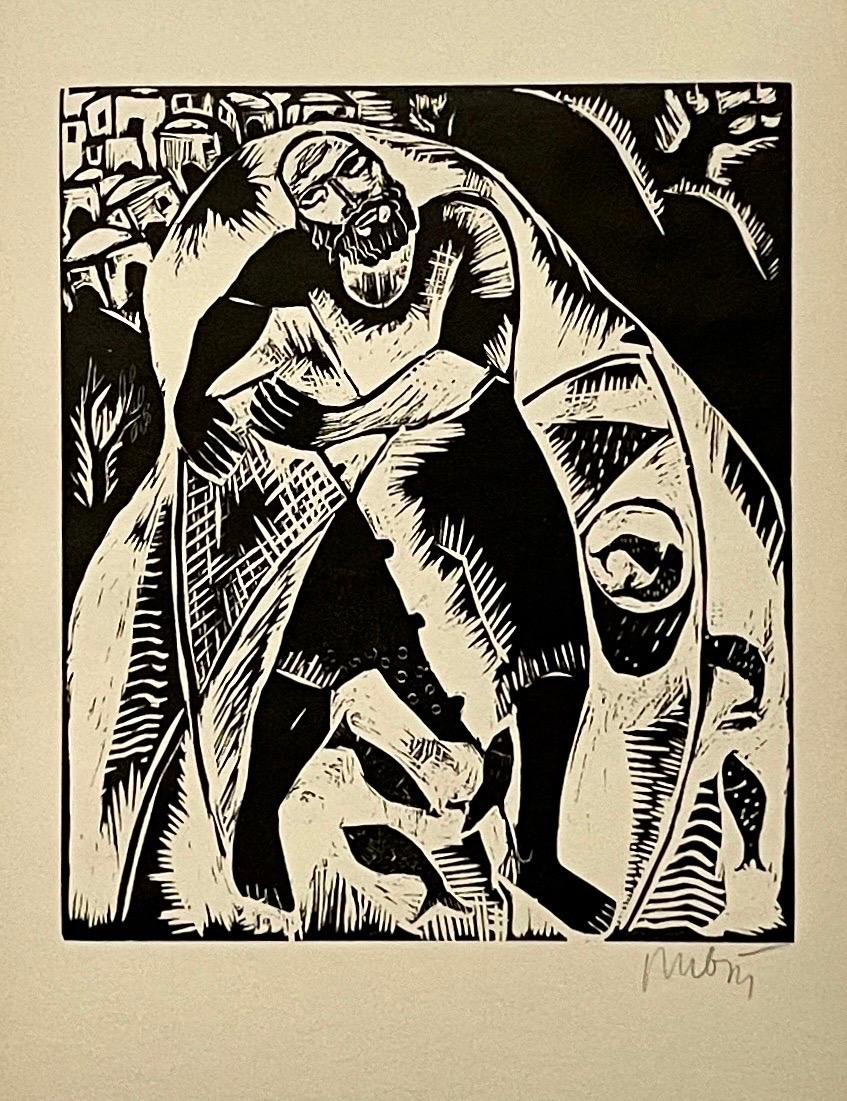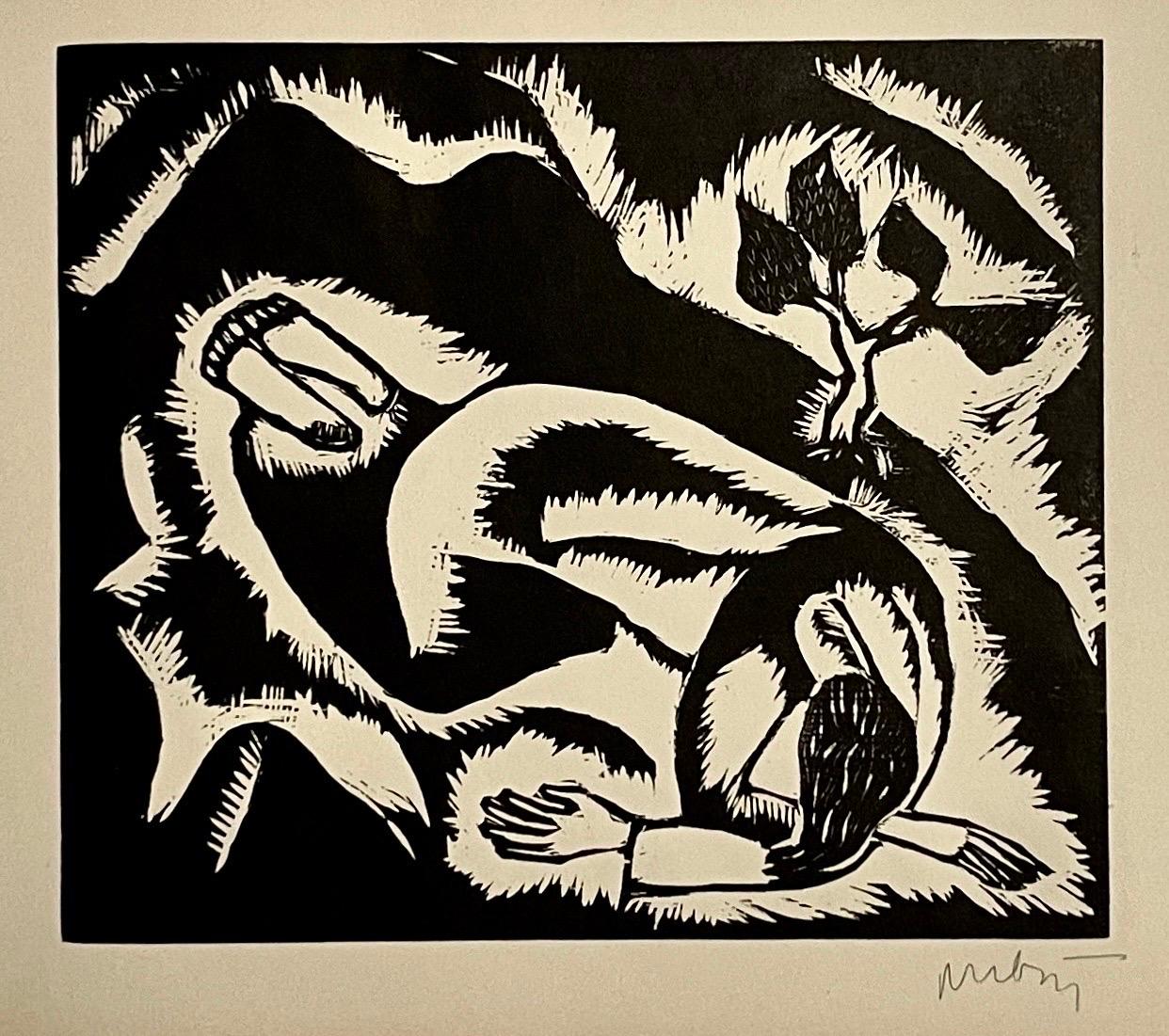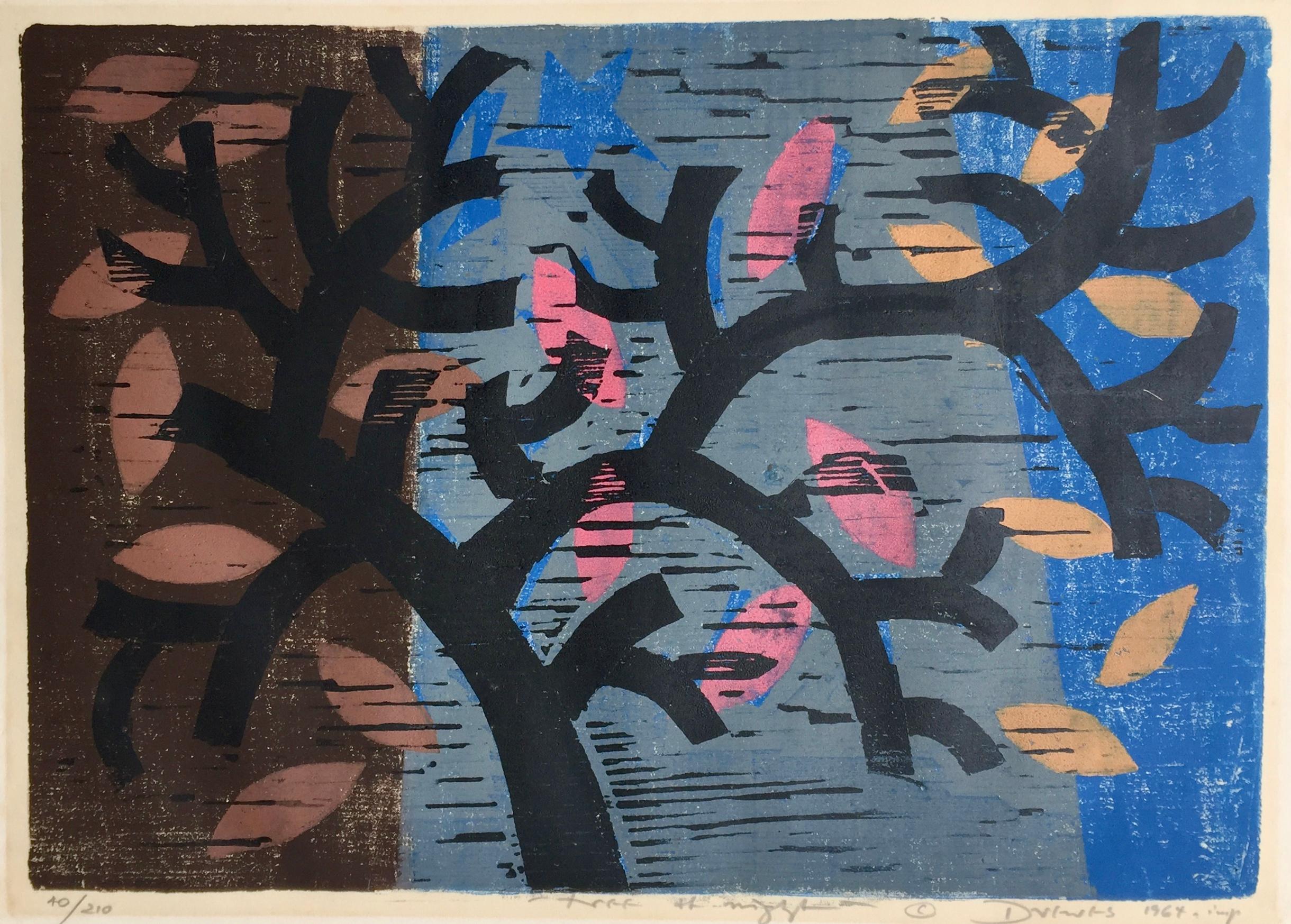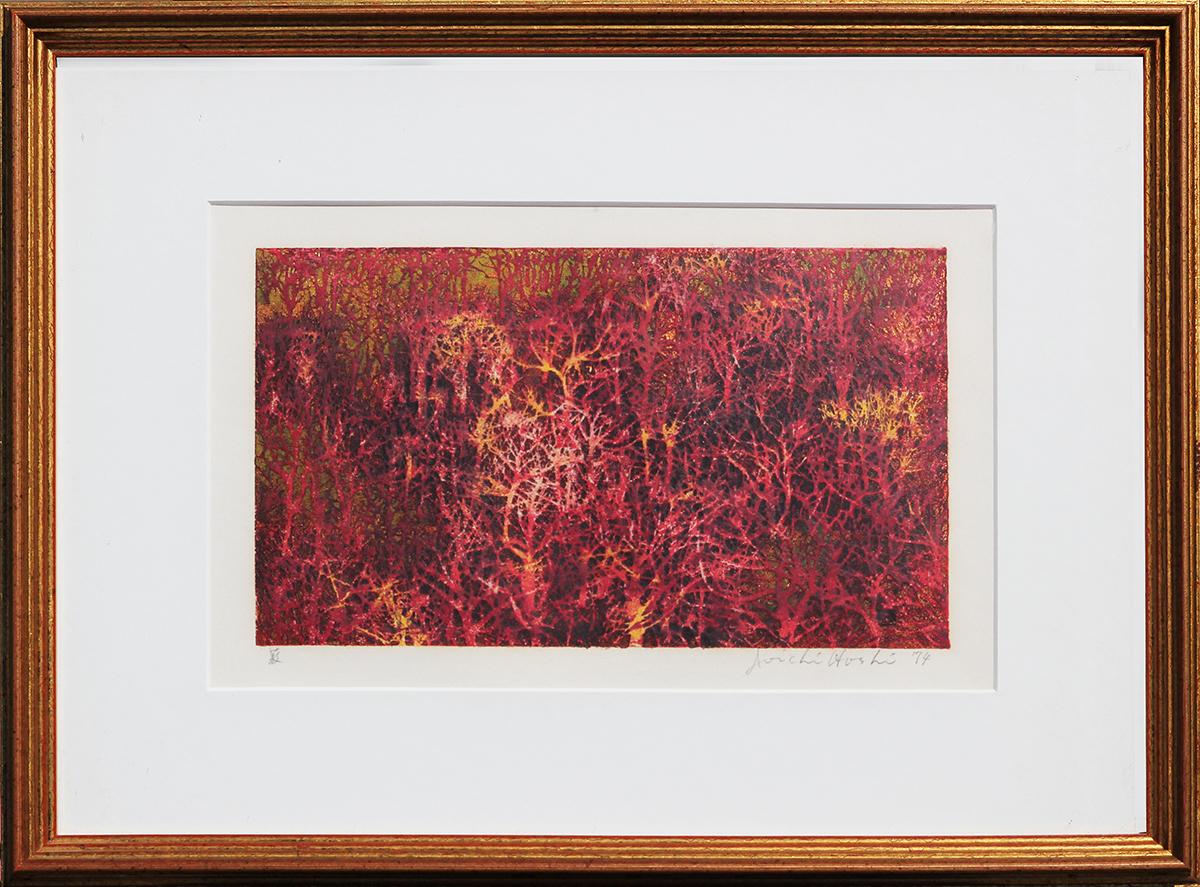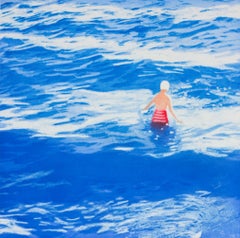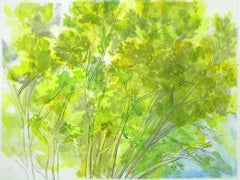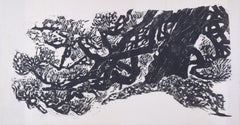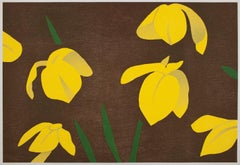
Yellow Flags
View Similar Items
Alex KatzYellow Flags2013
2013
About the Item
Alex Katz
Flat color and minimal forms contrast the often monumental scales of the paintings by Alex Katz through which he creates portraits and landscapes of deceptive simplicity. Although the signature stark style that defines his prints and other work is now recognizable at a glance, it took him a decade to develop. During that time, he has said he destroyed hundreds of paintings.
Born in Brooklyn, New York, to Russian émigré parents, Katz’s family moved to Queens when he was a baby and that is where his family’s passion for the arts supported his early creative interests. In 1946, he enrolled at the Cooper Union in Manhattan where he studied painting under Morris Kantor. While he was influenced by the bold colors and hard edges of modernism, he shifted away from the then-dominant Abstract Expressionism movement to figurative scenes of life that have an inherent cool in their pared-down approach. Especially impactful were Katz’s summer studies between 1949 and 1950 at the Skowhegan School of Painting and Sculpture in Maine, a place where, as he later wrote: “I tried plein air painting and found my subject matter and a reason to devote my life to painting.”
Katz’s first solo show was in 1954 at Roko Gallery in New York. He experimented over the course of the following years with collage and painting on aluminum sheets, with his work in the 1960s drawing inspiration from film and advertising. In the 1970s, Katz expanded into portrait groups that regularly depicted the cultural scene of New York; in the 1980s, he extended his focus to fashion and its supermodels. Since the late 1950s, an enduring muse for his portraits has been his wife, Ada, while others have painted friends and famous figures. The intimate closeness of the frequently cropped faces in Katz’s portraits exudes a sense of tension with the subjects’ enigmatic expressions and planes of color.
In the 1960s, Katz collaborated with American dancer and choreographer Paul Taylor on sets and costumes. His concentration on landscapes emerged in the late 1980s, with atmospheric night views joining his practice, which had previously been defined by bright colors. Always finding new perspectives on his work, he has explored using iPhone photographs as the basis for large-scale compositions in recent years.
Katz’s prolific career has spanned sculpture, prints and public art along with his paintings and drawings, and his works can be found in the collections of leading museums such as the Metropolitan Museum of Art, Whitney Museum of American Art and Museum of Modern Art. He has had over 250 solo exhibitions around the world and continues to be acclaimed. In 2022, the Solomon R. Guggenheim Museum opened a major retrospective of his art.
Find Alex Katz art today on 1stDibs.

- Wading II ( Blue )By Isca Greenfield-SandersLocated in New York, NY2012, direct to plate photogravure and aquatint, 31 1/2 x 30 1/2 inches, edition of 50
- Pin Oak CrownBy Sylvia Plimack MangoldLocated in New York, NY2006, aquatint with drypoint, 17 3/4 x 23 3/4 inches, edition of 34Category
Early 2000s Prints and Multiples
MaterialsAquatint, Drypoint
- (On) SpeechBy Ross BlecknerLocated in New York, NY2010, etching with aquatint, 22 x 22 1/4 inches, edition of 40Category
20th Century Landscape Prints
MaterialsEtching, Aquatint
- Silver BeachBy Isca Greenfield-SandersLocated in New York, NY2008, direct to plate photogravure and aquatint, 27 x 22 inches, edition of 50Category
21st Century and Contemporary Contemporary Landscape Prints
MaterialsPhotogravure
- Tommy and StinkyBy Isca Greenfield-SandersLocated in New York, NY2008, direct to plate photogravure and aquatint, 23 1/2 x 22 inches, edition of 50Category
21st Century and Contemporary Contemporary Figurative Prints
MaterialsPhotogravure
- (On) BlessingBy Ross BlecknerLocated in New York, NY2010, etching with aquatint, 22 x 22 1/4 inches, edition of 40Category
21st Century and Contemporary Landscape Prints
MaterialsEtching
- Four trees. Paper, wood carving , 29x29 cmLocated in Riga, LVFour trees. Paper, wood carving, 29x29 cm Dzidra Ezergaile (1926-2013) Born in Riga. School years alternate with summer work in the countryside. In 1...Category
1970s Abstract Landscape Prints
MaterialsPaper, Woodcut
- Matsu (Pine)Located in Fairlawn, OHMatsu (Pine) Woodcut, 1968 Signed: "'Matsu' Naoko Matsubara" in pencil by the artist (see photo) Annotated in pencil "Ed 25" (see photo) Edition: 25 Condition: 7" long waterstain at bottom edge of sheet starting ca. 6" in from lower left corner. Does not effect image. Light foxing throughout, especially in margins. Matting covers the foxing up. Image size: 22 x 43 1/4 inches Naoko Matsubara (1937 - ) Matsubara Naoko (松原直子) was born in 1937 on Shikoku Island into an old Shinto family, and grew up in Kyoto, where her father was a senior priest. She was educated at the Kyoto Academy of Fine Art (BFA, 1960); and was a Fulbright Scholar at what is now Carnegie Mellon University, Pittsburgh (MFA, 1962). She was also a Special Invited Student at the Royal College of Art in London (1962). After travelling extensively in Europe and Asia, Naoko Matsubara returned to Japan for two years, before being lured back to the United States. There she worked as personal assistant to the late Prof. Fritz Eichenberg, and also taught at the Pratt Institute of Graphic Art in New York, as well as at the University of Rhode Island. Subsequently she lived in Cambridge, Mass. In 1972 Naoko Matsubara moved to Canada, and now lives in Oakville, Ontario. She has continued to be extremely active as an artist: locally, nationally and internationally. Since 1960 she has had some 75 solo exhibitions, in the USA, Canada, Japan, England, Ireland, Germany, Austria, Switzerland, Holland and Mexico. She has also participated in numerous group exhibitions. Public collections owning work by Naoko Matsubara include: Albertina, Vienna; Art Institute of Chicago; British Museum; Carnegie Institute; Museum für Kunst und Gewerbe, Hamburg; Museum of Fine Arts, Boston; Philadelphia Museum of Art; Cincinnati Art Museum; Detroit Institute of Art; Fogg Art Museum, Harvard University; Haifa Museum, Israel; Kyoto National Museum of Modern Art; Royal Ontario Museum; The White House, Washington DC; Tokyo National Museum of Modern Art; Yale University Art Gallery. Naoko Matsubara has published some 20 books and portfolios of her work, including most recently Tibetan Sky (Calgary: Bayeux Arts Publishers, 1997; Preface by the Dalai Lama); Tokonoma (Bath, England: Old School Press, 1999); and Konjaku monogatari (Tokyo: ALIS, 2002). Her work also includes a large mural and donor pillar for the new YMCA building in Oakville, Ontario (2003); mixed-media screens; and paintings. In 2005, the Royal Ontario Museum commissioned two large works from Naoko Matsubara for the Museum's Bloor Street window case. The artist generously donated a third work, Emerald Summer (2006). The three works (each 195 cm. high by 95 cm. wide) will be rotated at regular intervals into the outside window. This is the first commissioned artwork to be displayed on the Museum’s Bloor Street Plaza. Recent major exhibitions have been in Tokyo, Kyoto, Indiana, and Toronto (Royal Ontario Museum). Further exhibitions are currently being planned in Seattle and Tokyo; new books in process include In Praise of Hands. She also continues to travel widely; is frequently invited to speak about her work; and also publishes essays, in both English and Japanese. Naoko Matsubara’s work has been the subject of countless articles and reviews; documentary films (including two from the Canadian Broadcasting Corporation); and several book-length publications: notably Mokuhan: The Woodcuts of Munakata and Matsubara (text by Joan Stanley-Baker; Victoria, BC: Art Gallery of Greater Victoria, 1976); Naoko Matsubara: Development of Artistic Style and Technique (text by Barbara Woodworth; MFA thesis, Harvard University, 1985);.and Tree Spirit...Category
1960s Abstract Landscape Prints
MaterialsWoodcut
- Stream 61, Forest, Stream, Light Teal Green, Yellow, Dark Eggplant PurpleBy Eve StocktonLocated in Kent, CTThis is a unique woodcut print of a forest and stream in dark eggplant purple offset by a minty light teal greenish blue and pale yellow background. The monotype brings to mind the t...Category
2010s Abstract Landscape Prints
MaterialsInk, Archival Paper, Woodcut
- Stream 60, Forest, Stream, Light Teal Green, Yellow, Dark Eggplant PurpleBy Eve StocktonLocated in Kent, CTThis is a unique woodcut print of a forest and stream in dark eggplant purple offset by a minty light teal greenish blue and pale yellow background. The monotype brings to mind the t...Category
2010s Abstract Landscape Prints
MaterialsInk, Archival Paper, Woodcut
- Keiji Shinohara, Accelerondo, Ukiyo-e woodcut print landscape, 2005By Keiji ShinoharaLocated in New York, NYKeiji Shinohara was born and raised in Osaka, Japan. After 10 years as an apprentice to the renowned Keiichiro Uesugi in Kyoto, he became a Master Printmaker and moved to the United ...Category
21st Century and Contemporary Abstract Abstract Prints
MaterialsPaper, Woodcut
$2,000 Sale Price20% Off - Rare 1923 Cubist Reuven Rubin Woodcut Woodblock Kabbalah Print Israeli JudaicaBy Reuven RubinLocated in Surfside, FLThis is from the original first edition 1923 printing. there was a much later edition done after these originals. These are individually hand signed in pencil by artist as issued. This listing is for the one print. the other documentation is included here for provenance and is not included in this listing. The various images inspired by the Jewish Mysticism and rabbis and mystics of jerusalem and Kabbalah is holy, dramatic and optimistic Rubin succeeded to evoke the spirit of life in Israel in those early days. They are done in a modern art style influenced by German Expressionism, particularly, Ernst Barlach, Ernst Ludwig Kirchner, and Franz Marc, as introduced to Israel by Jakob Steinhardt, Hermann Struck and Joseph Budko. Reuven Rubin 1893 -1974 was a Romanian-born Israeli painter and Israel's first ambassador to Romania. Rubin Zelicovich (later Reuven Rubin) was born in Galati to a poor Romanian Jewish Hasidic family. He was the eighth of 13 children. In 1912, he left for Ottoman-ruled Palestine to study art at Bezalel Academy of Art and Design in Jerusalem. Finding himself at odds with the artistic views of the Academy's teachers, he left for Paris, France, in 1913 to pursue his studies at the École Nationale Supérieure des Beaux-Arts. He was of the well known Jewish artists in Paris along with Marc Chagall and Chaim Soutine, At the outbreak of World War I, he was returned to Romania, where he spent the war years. In 1921, he traveled to the United States with his friend and fellow artist, Arthur Kolnik. In New York City, the two met artist Alfred Stieglitz, who was instrumental in organizing their first American show at the Anderson Gallery. Following the exhibition, in 1922, they both returned to Europe. In 1923, Rubin emigrated to Mandate Palestine. Rubin met his wife, Esther, in 1928, aboard a passenger ship to Palestine on his return from a show in New York. She was a Bronx girl who had won a trip to Palestine in a Young Judaea competition. He died in 1974. Part of the early generation of artists in Israel, Joseph Zaritsky, Arieh Lubin, Reuven Rubin, Sionah Tagger, Pinchas Litvinovsky, Mordecai Ardon, Yitzhak Katz, and Baruch Agadati; These painters depicted the country’s landscapes in the 1920s rebelled against the Bezalel school of Boris Schatz. They sought current styles in Europe that would help portray their own country’s landscape, in keeping with the spirit of the time. Rubin’s Cezannesque landscapes from the 1920s were defined by both a modern and a naive style, portraying the landscape and inhabitants of Israel in a sensitive fashion. His landscape paintings in particular paid special detail to a spiritual, translucent light. His early work bore the influences of Futurism, Vorticism, Cubism and Surrealism. In Palestine, he became one of the founders of the new Eretz-Yisrael style. Recurring themes in his work were the bible, the prophet, the biblical landscape, folklore and folk art, people, including Yemenite, Hasidic Jews and Arabs. Many of his paintings are sun-bathed depictions of Jerusalem and the Galilee. Rubin might have been influenced by the work of Henri Rousseau whose naice style combined with Eastern nuances, as well as with the neo-Byzantine art to which Rubin had been exposed in his native Romania. In accordance with his integrative style, he signed his works with his first name in Hebrew and his surname in Roman letters. In 1924, he was the first artist to hold a solo exhibition at the Tower of David, in Jerusalem (later exhibited in Tel Aviv at Gymnasia Herzliya). That year he was elected chairman of the Association of Painters and Sculptors of Palestine. From the 1930s onwards, Rubin designed backdrops for Habima Theater, the Ohel Theater and other theaters. His biography, published in 1969, is titled My Life - My Art. He died in Tel Aviv in October 1974, after having bequeathed his home on 14 Bialik Street and a core collection of his paintings to the city of Tel Aviv. The Rubin Museum opened in 1983. The director and curator of the museum is his daughter-in-law, Carmela Rubin. Rubin's paintings are now increasingly sought after. At a Sotheby's auction in New York in 2007, his work accounted for six of the ten top lots. Along with Yaacov Agam and Menashe Kadishman he is among Israel's best known artists internationally. Education 1912 Bezalel Academy of Arts and Design, Jerusalem 1913-14 École des Beaux Arts, Paris and Académie Colarossi, Paris Select Group Exhibitions Eged - Palestine Painters Group Eged - Palestine Painters Group, Allenby Street, Tel Aviv 1929 Artists: Chana Orloff, Abraham Melnikoff, Rubin, Reuven Nahum Gutman, Sionah Tagger,Arieh Allweil, Jewish Artists Association, Levant Fair, Tel Aviv, 1929 Artists: Ludwig Blum,Eliyahu Sigad, Shmuel Ovadyahu, Itzhak Frenel Frenkel,Ozer Shabat, Menahem Shemi...Category
1920s Abstract Figurative Prints
MaterialsWoodcut




